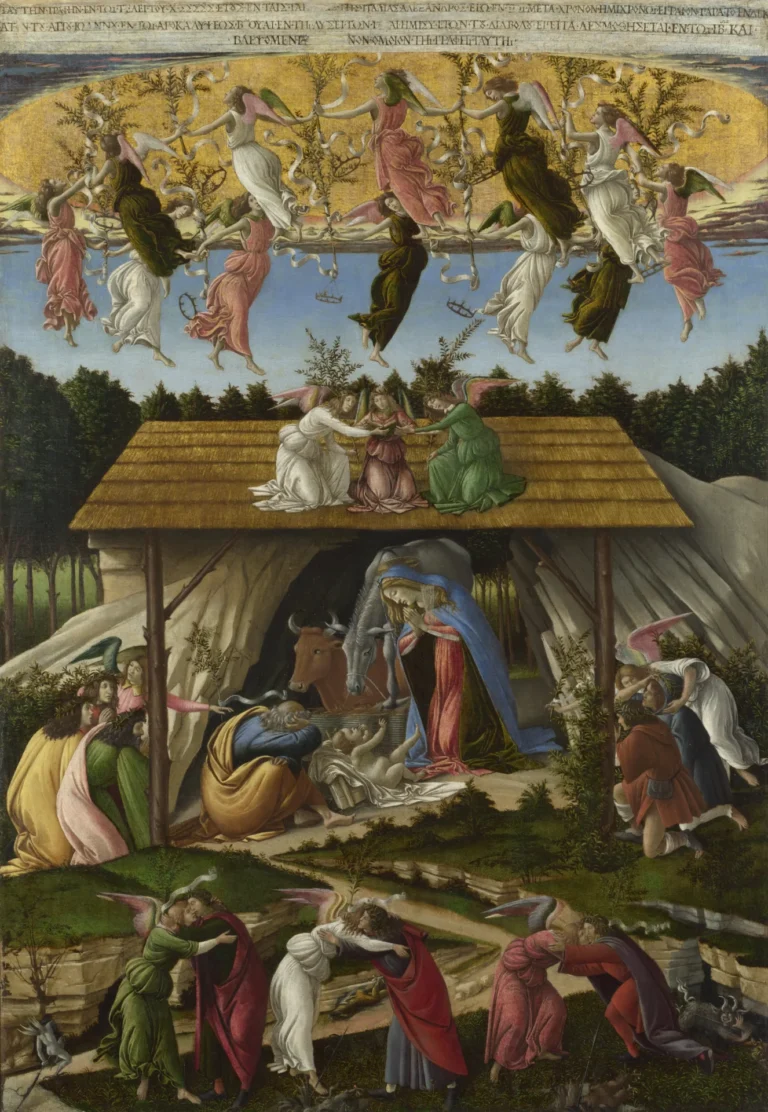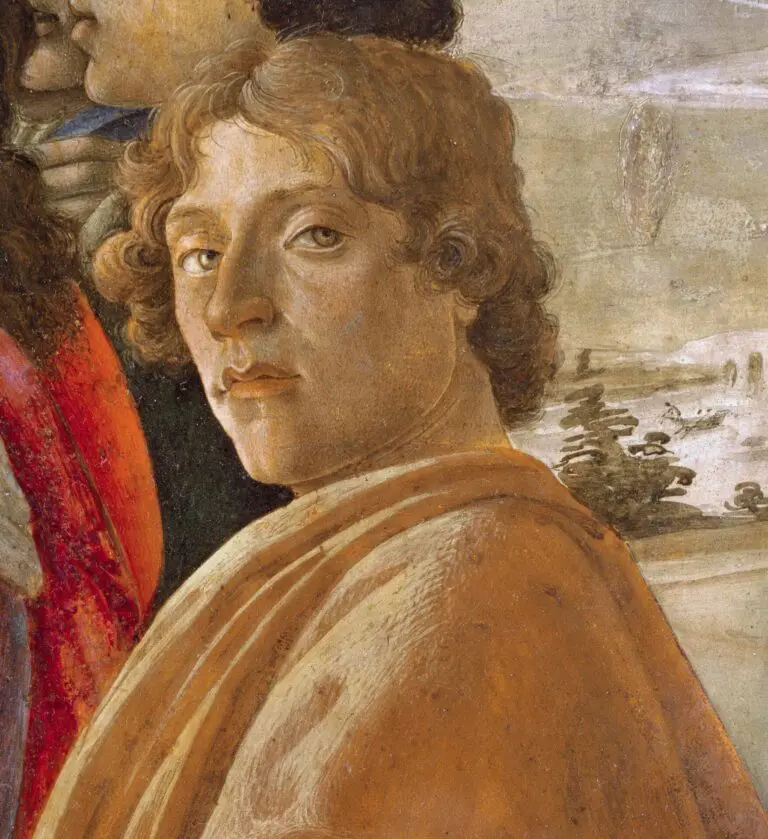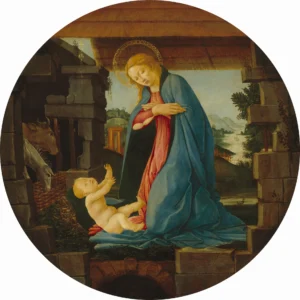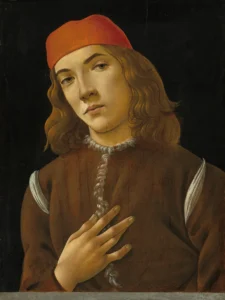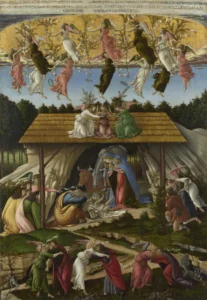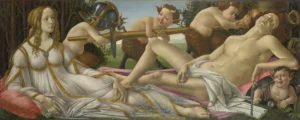Mystical Nativity (1500)
Sandro Botticelli's 'Mystical Nativity' features an extraordinary blend of the traditional Nativity scene with prophetic elements of the Second Coming. Painted around 1500, the artwork showcases the Virgin Mary and infant Jesus prominently within a richly symbolic environment. The painting features numerous angels, each dressed in distinct colors symbolizing virtue, and ultimately conveys the theme of good triumphing over evil amidst the chaos of Botticelli's contemporary world. This unique interpretation reflects Botticelli's personal convictions shaped by the socio-political turmoil of Renaissance Italy, along with his admiration for the radical teachings of Girolamo Savonarola.
Around 1500
About the Artwork
Created amidst the tumultuous backdrop of late 15th-century Italy, Botticelli's 'Mystical Nativity' encapsulates both personal and broader socio-political themes of the time. The chaos from the French invasions and civil unrest in Florence influenced the artist’s view, aligning his work with apocalyptic prophecies. He synthesized elements of the Nativity with biblical references from the Book of Revelation, presenting a painting that serves as both a spiritual vision and a social commentary. Furthermore, under the sway of Savonarola’s preaching—advocating for moral reform—the artist crafted a narrative that was deeply embedded in contemporary fears and hopes, effectively bridging past with present.
Did You Know
Mystical Nativity is significant as it is the only known signed work by Sandro Botticelli, marking a personal affirmation of this unique piece.
The Greek inscription at the top of the painting connects Botticelli’s work directly to the Book of Revelation, reflecting his beliefs in apocalyptic themes during his lifetime.
Botticelli was deeply influenced by Girolamo Savonarola’s sermons, which emphasized moral reformation and critiqued the indulgent lifestyles of the Florentine elite, implications which are echoed in the narrative structure of the nativity scene.





